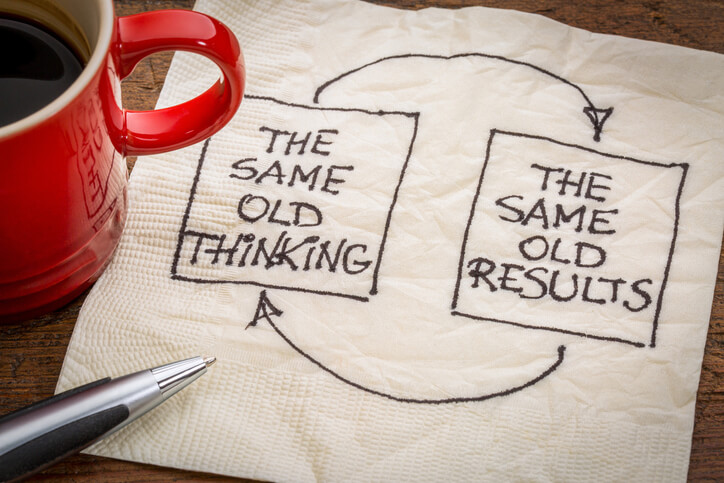Stop Negative Lifetraps and Reinvent Your Life

Have you ever wondered why you repeat unhealthy patterns in your relationships or why you tend to have a certain unhealthy way in which you view yourself, others or the world? Early maladaptive schemas could be to blame.
What is a schema?
An early maladaptive schema (EMS) is a long-standing negative pattern of thinking, feeling and/or behaving that typically begins early in life. They pose obstacles for accomplishing your goals and getting your needs met.
Schemas are also referred to as “lifetraps” — they can block you from reaching your full potential in life and relationships. When we become adults, we forget to take the time to question these self-defeating beliefs and challenge their validity, thus staying trapped in our patterns.
“A child has certain core needs for basic safety, connection to others, autonomy, self-esteem, self expression, and realistic limits. If these are met, then the child will usually thrive psychologically. It is when there are serious shortfalls in meeting the child’s needs that problems develop. These shortfalls are what we mean by lifetraps.” Dr. Jeffrey Young, Reinventing Your Life
When we are young we naturally believe what we hear and see from important caregivers around us to be the absolute truth of who we are and who others are. We internalize these negative beliefs and view the world through them.
Early maladaptive schemas can also begin with something that was done or said to us by our families or other children, which damaged us in some way. This damage could have been in the form of criticism, abandonment, abuse, exclusion, or emotional deprivation.
Schemas develop as protective measures when our core childhood needs are not sufficiently met, thus serving a functional purpose at the time. As adults they can become outdated and ineffective defense mechanisms. Schemas can stay dormant until they are activated by a trigger and then you find yourself behaving in ways that are extreme or inappropriate for the situation.
Some examples of schema beliefs are: “I’m unlovable,” “I’m a failure,” “People don’t care about me,” “I’m not important,” “Something bad is going to happen,” “People will leave me,” “I will never get my needs met,” “I will never be good enough,” and so on.
“Schemas determine how we think, feel, act, and relate to others. They trigger strong feelings such as anger, sadness, and anxiety. Even when we appear to have everything social status, an ideal marriage, the respect of people close to us, career success we are often unable to savor life or believe in our accomplishments.” Dr. Jeffrey Young, Reinventing Your Life
Types of Schemas
Dr. Jeffrey Young, who developed the Schema-Focused model, proposed 18 types of schemas:
- Abandonment/Instability – the real or perceived unreliability and instability of others for basic connection and support; belief that others are unwilling or incapable of meeting your needs.
- Mistrust/Abuse – the expectation that others will hurt, abuse, cheat, or intentionally harm in some way.
- Emotional Deprivation – the expectation that one’s desire for emotional support will not be adequately met by others.
- Defectiveness/Shame – the belief that one is bad, unwanted, unlovable.
- Social Alienation/Rejection – the feeling that one is different or isolated from others.
- Dependence/Incompetence – the belief that one is unable to handle daily responsibilities competently.
- Vulnerability to Harm/Illness – the expectation that an unpreventable and imminent catastrophe will strike at any time.
- Enmeshment/Undeveloped Self – excessive emotional involvement and closeness with one or more significant others at the expense of full individuation.
- Failure – the belief that one has or will inevitably fail and is fundamentally inadequate.
- Entitlement/Grandiosity – the belief that one is superior to others with special rights and privileges.
- Insufficient Self-Control/Self-Discipline – difficulty or refusal to exercise sufficient self-control.
- Subjugation – excessive surrendering of control to others by suppressing one’s needs and emotions.
- Self-Sacrifice – excessive focus on meeting the needs of others at the expense of one’s own needs.
- Approval-Seeking/Recognition-Seeking – one’s sense of esteem is dependent on the reactions of others.
- Negativity/Pessimism – exaggerated expectation that things will go wrong, pervasive focus on the negative aspects of life.
- Emotional Inhibition – the excessive inhibition of spontaneous action, feeling, or communication.
- Unrelenting Standards/Hyper-Criticalness – the belief that one must strive to meet very high internalized standards to avoid criticism.
- Punitiveness – the belief that people, including oneself, should be punished harshly for mistakes.
Schema Therapy
One perspective for understanding our schemas focuses on how early childhood experiences shaped important feelings and beliefs about our self. Schema therapy is an integrative form of psychotherapy in which the goal is to identify your schemas, become aware of how they are interfering in your life, and replace them with new, healthy cognitive and behavioral options.
In my next post, I will explore how Dr. Young believes we perpetuate our schemas through 3 types of dysfunctional coping styles. I will also elaborate on how schema therapy can work for you as you learn to get your emotional needs met efficiently.
Make an Appointment with Watershed Counseling
We encourage you not to do this work alone. We would be honored to work with you in finding the best way to break unhealthy patterns. To make a first appointment, please call 601-362-7020 or send us a message.







